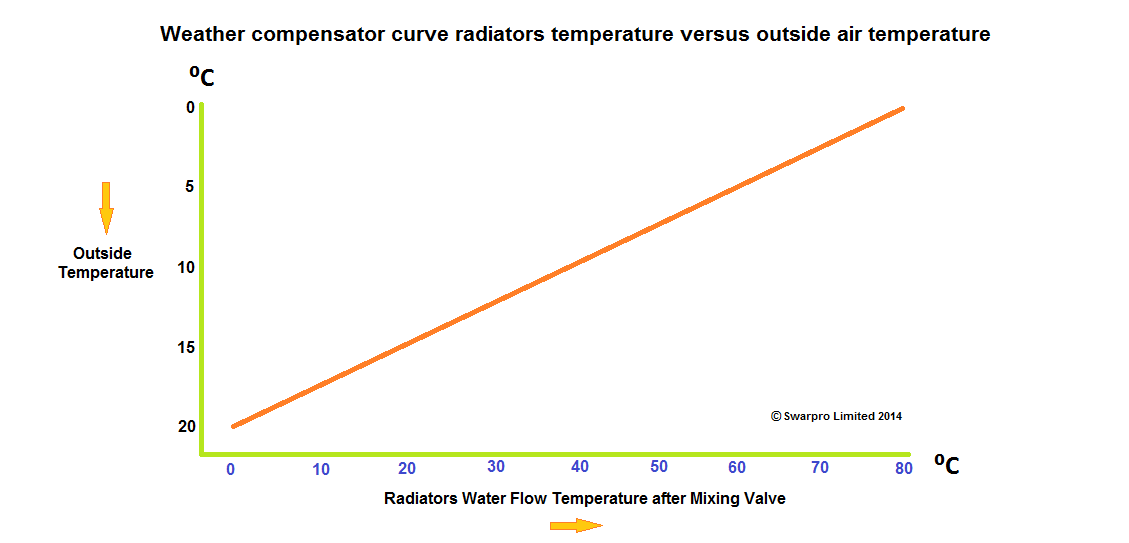This control scheme would be used in a typical medium sizes commercial building. It has three heating pipework circuits of radiators. It also has one hot water calorifier. The system switches on the three heating zones independantly in the morning by means of an 'Optimizer controller'. An optimizer takes over the functionality of a standard time switch. The energy optimizer uses an outside temperature sensor and a room temperature sensor to decide when the most energy efficient time is to switch on the boiler plant in order to get the building up to the correct temperature in the rooms for the time the building users arrive into work. The system also has three weather compensator controllers. These controllers sets the temperature of the water in the radiators based on the prevailing outside temperature. If it is very cold it makes the radiators hot, if it is mild it makes the radiators warm. This further saves on energy costs. The hot water cylinder also has a back up electric immersion heater for summer or maintenance of the boiler use. There is a time extension push button panel which can be located in any room in the building. Once pushed it will extend the heating on time for a period of one hour. The push button will illuminate to show it has been pushed. The time extended zone will automatically shut off once the hour has elapsed.
During 'Off' times the system has two stages of frost protection. The 'first stage frost' will bring on the pumps if the outside temperature drops so low that there is a risk of pipes freezing in the building. The pumps will circulate the water around the system but will not heat it. The 'second stage frost' will bring on the boiler if the temperature in the pipework drops even further so that there is a greater risk of pipes freezing.
The two boilers are sequenced based on demand. The demand is decided by the temperature of the common return pipework from the overall system. If there is less demand the second boiler will be swiched off and its back end valve will close to save energy. The lead boiler selected would be automatically sequenced on a weekly basis.
Each boiler has its own shunt pump and thermostat. The shut pump thermostat switches on the shunt pump (during a timed on period) if the temperature at the return outlet of the boiler is too low. This is to protect the boiler.
We supply, design and commission the complete control system consisting of the boiler house motor control centre, all valves, actuators, linkage kits, temperature sensors and thermostats and full handover documentation with commissioning certificate for the above control scheme.

Swarpro Limited, 71-75 Shelton Street, London, WC2H 9JQ
Registered in England Company Number 0766703
VAT Registration Number 184 064 211